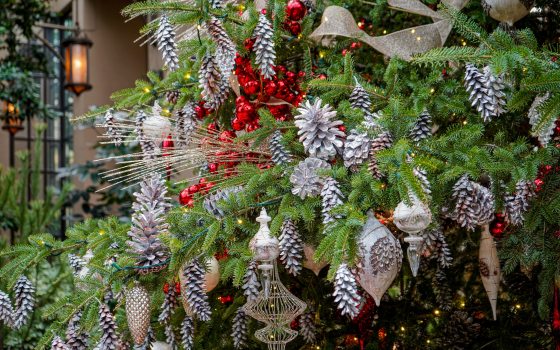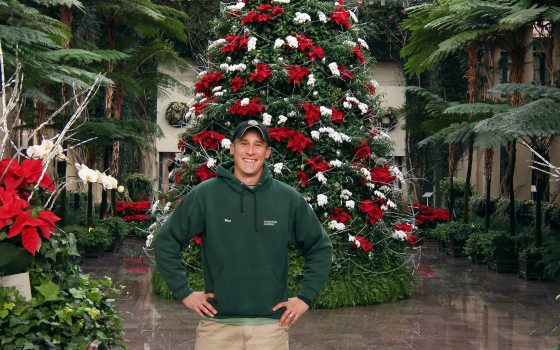From our twin 11-foot Fraser fir trees shimmering in white and silver that welcome you to our Visitor Center, to the 15-foot Silver Garden tree embellished with Tillandsia, cut trees are an integral element of A Longwood Christmas, both indoors and out. Cut tree types showcased this year include Fraser fir (Abies fraseri), white fir (Abies concolor), and grand fir (Abies grandis), all hand-selected based on color, needle retention, shape, size, texture, and fragrance … and to accommodate the desired aesthetic for each element of our display. Taking all of these factors into consideration when selecting a cut tree for your own home will not only help you achieve your own desired look but help make sure you’re picking the best tree to last the length of the Christmas season.
The best time to select a cut tree for your home is sometime around Thanksgiving, after the tree has experienced at least one hard frost before it’s cut. It’s best to keep in mind that a cut tree is like a floral arrangement; it has a shelf life and you have to plan on how long you’d like it to remain up and decorated in your home, while taking into consideration it will be in a heated, indoor environment for that length of time. Your tree will also need regular watering, especially when you first put it in your home.
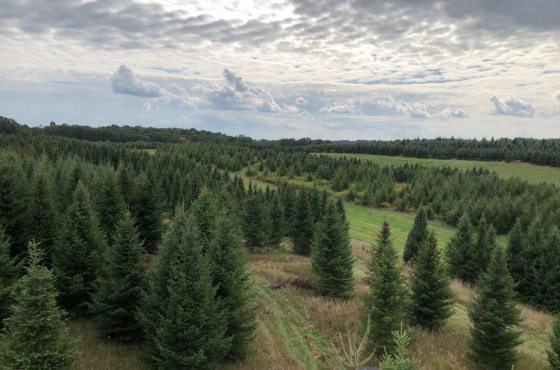
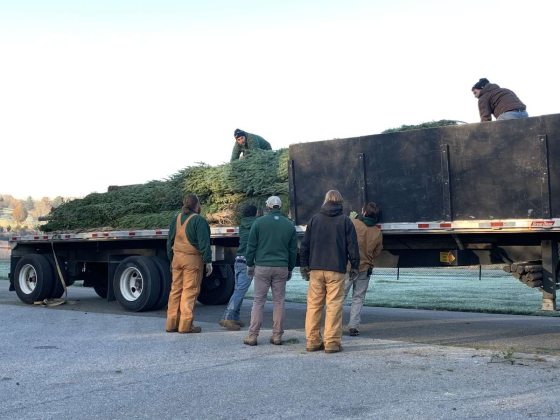
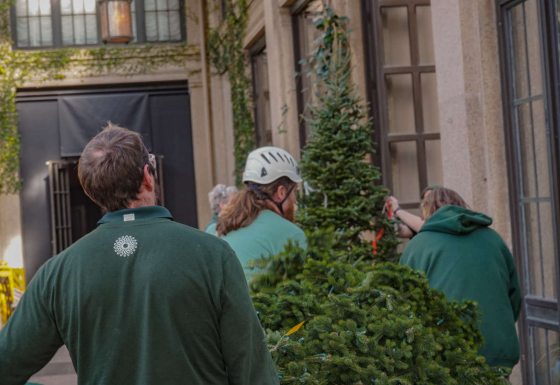
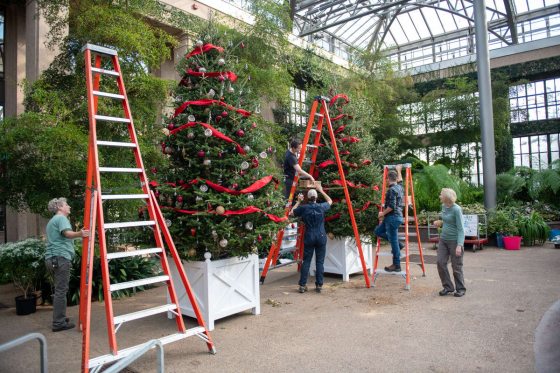
The Fraser fir is a fantastic choice for home Christmas trees. We tend to use Fraser firs the most during each A Longwood Christmas season, due in part to their resilience and steadfast needle retention. Dark blue-green in color, Fraser firs feature branches that turn slightly upward with flattened and shiny needles. Fraser firs are generally narrow and pyramid-like in shape and feature a pleasant scent.
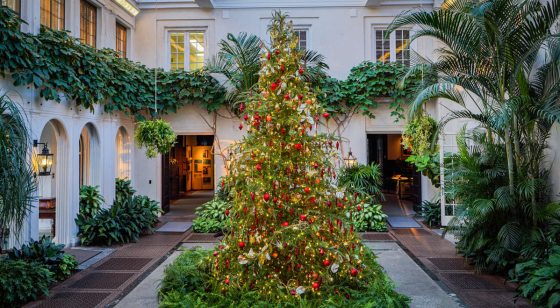
Our 18-foot Ballroom tree glistening in crystals, colorful Mediterranean House tree, showstopping Exhibition Hall Stage tree, and Fern Floor trees, among many others throughout the display, are all Fraser firs. Those that sit among the ribbon flowing on our Fern Floor are tightly sheared and denser as compared to our Mediterranean House tree, which is more open and therefore offers more depth and opportunity for decoration. Characteristically, the Fraser fir is easy to decorate because of the space between its branches.

Despite its common name, the white fir features lighter blue-green to silvery, softer needles and a pleasant citrus-like fragrance. The white fir is typically narrow and conical in shape, with a straight trunk, upper branches that grow upward, and lower branches that tend to recline. Its distinct color, soft needles, and good needle retention make the white fir a good Christmas tree choice. In fact, our 25-foot Gardener’s Tree adorned with gourds is a white fir, as is our 8-foot-tall snowflake-clad Estate Fruit House tree and our 15-foot Silver Garden tree laced with blue ribbon and textural Tillandsia.

If you’re looking for a tree with a strong fragrance and thick foliage, the grand fir is a great choice. With needles in two distinct rows, the grand fir is dense with a glossy green color, yet soft to the touch. You can find a grand fir decorated in natural tones and wreath ornaments in our Lookout Loft Treehouse.
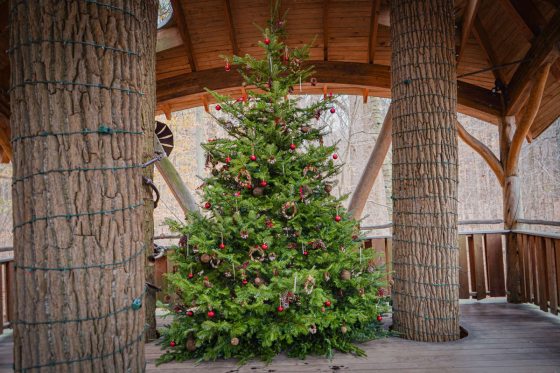
Beyond the three types of cut trees you’ll find here at Longwood during A Longwood Christmas, there are many other types to consider for your home. The balsam fir offers good needle retention, flexible branches, and a dark green hue, while the Douglas-fir boasts soft, shiny green needles. While the Norway spruce is beautiful with its weeping branches and dark green foliage, it doesn’t offer optimal needle retention for a long period of time. Here at Longwood, needle retention is one of the utmost important factors that go into our cut tree selection, as we need to ensure our holiday magic dazzles every single minute and in every single detail throughout our A Longwood Christmas season.
